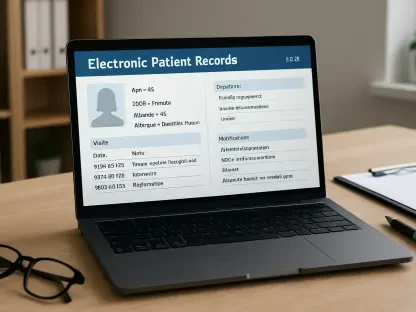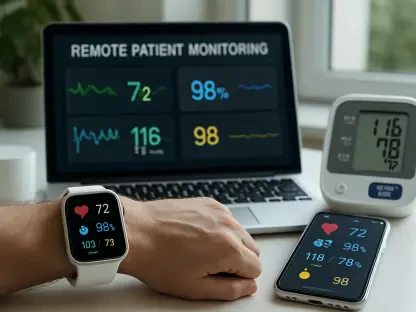In a rapidly evolving digital healthcare landscape, Hong Kong finds itself grappling with significant challenges in telehealth services, as revealed by a recent investigation from the city’s Consumer Council. With nearly half of both public and private healthcare institutions now offering remote consultations, prescriptions, and health monitoring, the sector has seen explosive growth since the global health crisis. However, this expansion has exposed critical gaps in regulation, accountability, and consumer safety. The findings, based on extensive surveys of medical practitioners, providers, and consumers, paint a troubling picture of an industry lacking unified standards and robust oversight. This urgent call for reform highlights the need to balance innovation with protection, ensuring that telehealth can deliver on its promise of accessibility without compromising quality or trust.
Addressing Systemic Flaws in Telehealth
Regulatory Gaps and Accountability Challenges
The investigation conducted by the Consumer Council uncovered a fragmented regulatory framework that fails to keep pace with the rapid adoption of telehealth in Hong Kong. A comprehensive review of 19 platforms revealed that many operate without dedicated oversight, particularly those managed by patient organizations, private insurers, and other businesses. This lack of governance creates confusion around provider liabilities, leaving consumers exposed to potential risks. Chairman Clement Chan Kam-wing stressed the importance of establishing consistent quality standards across all sectors, including public and private hospitals, pharmacists, and allied health professionals. Without clear guidelines, the disparity in service delivery undermines confidence in remote healthcare. The report also flagged concerning practices, such as providers issuing medical certificates and prescriptions while denying that their services are diagnostic or therapeutic, a contradiction that raises serious ethical questions.
Consumer Risks and Financial Vulnerabilities
Beyond regulatory shortcomings, consumers face significant financial and medical risks due to ambiguous policies and inadequate transparency in telehealth services. Among the platforms surveyed, several attempted to evade legal responsibility for harm or losses, while others provided no clarity on insurance reimbursement, leaving patients to bear unexpected costs. A striking example involved a patient misled about pricing, initially paying what was believed to be a consultation fee, only to face additional charges for the actual service and medication. Such practices, described as potentially deceptive, highlight the urgent need for accountability. The absence of upfront information on consultation schedules, doctor specialties, and medicine delivery terms further compounds these issues, making it difficult for users to make informed decisions. Addressing these vulnerabilities through clearer communication and stricter oversight is essential to rebuilding trust in the system.
Strengthening Safeguards and Future Directions
Privacy and Security Shortcomings
A critical concern raised by the Consumer Council is the inadequate privacy and security measures across telehealth platforms in Hong Kong. Of the active platforms surveyed, only a small fraction using self-developed or third-party tools like WhatsApp and Zoom claimed to have privacy protection accreditation. This lax certification system stands in stark contrast to stricter regulations in other regions, such as the United States, where certain platforms are banned for telehealth use due to security risks. Council member Selwyn Yu Sing-cheung emphasized that the lack of standardized digital consent protocols—common in major markets like mainland China, Australia, and Singapore—heightens the risk of data breaches and misuse. Without robust safeguards, consumers are left vulnerable to privacy violations, which could deter adoption of these services. Strengthening security standards is not just a technical necessity but a fundamental step toward ensuring user confidence.
Proposed Reforms and Collaborative Solutions
To address the myriad challenges, the Consumer Council has put forward a series of recommendations aimed at overhauling the telehealth ecosystem through revised guidelines and clarified legislation. A key proposal is the creation of an industry-vetted whitelist of certified providers, mandating disclosures on certifications, approved communication tools, and complaint channels. Experts advocate for cross-sector collaboration involving the Hospital Authority, data security regulators, and industry stakeholders to ensure this initiative’s success. Transparency remains a core focus, with calls for providers to offer clear information on pricing and services upfront. Additionally, public education campaigns are suggested to raise awareness and foster trust in remote healthcare. As integration with the Guangdong-Hong Kong-Macao Greater Bay Area is expected to drive further demand for telehealth, these reforms are seen as crucial to managing growth while minimizing risks.
Building a Sustainable Telehealth Framework
Looking back, the Consumer Council’s detailed investigation shed light on an industry at a pivotal moment, revealing systemic flaws that threatened consumer safety and trust. The findings exposed regulatory gaps, privacy vulnerabilities, and deceptive practices that had persisted unchecked. By advocating for comprehensive reforms, standardized protocols, and greater transparency, the council charted a path toward a more reliable telehealth landscape. The push for harmonization with international benchmarks reflected a commitment to quality and safety. Moving forward, the focus must remain on actionable steps—implementing the proposed whitelist, enhancing security measures, and educating the public—to ensure sustainable growth. These efforts, if prioritized, could transform remote healthcare in Hong Kong into a model of innovation and protection, setting a precedent for others to follow.









